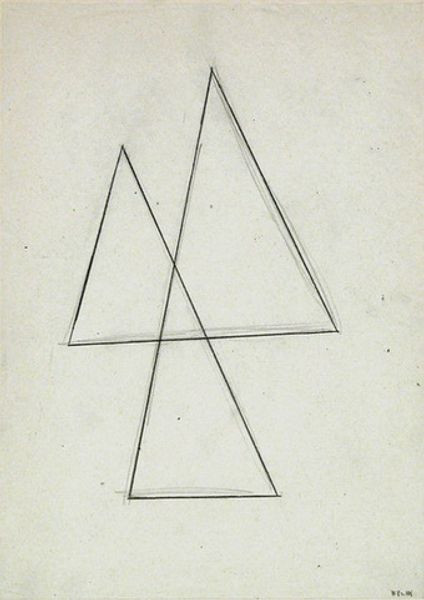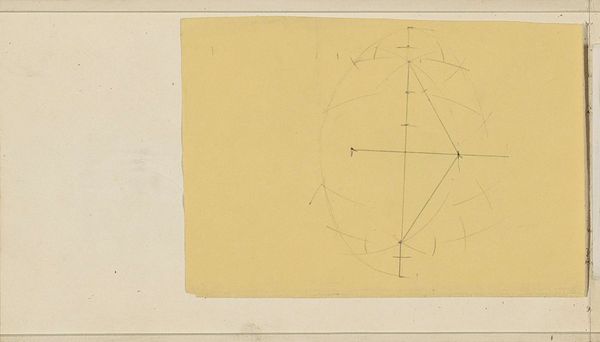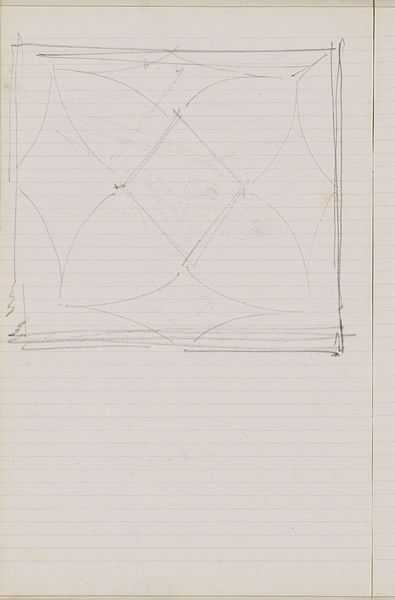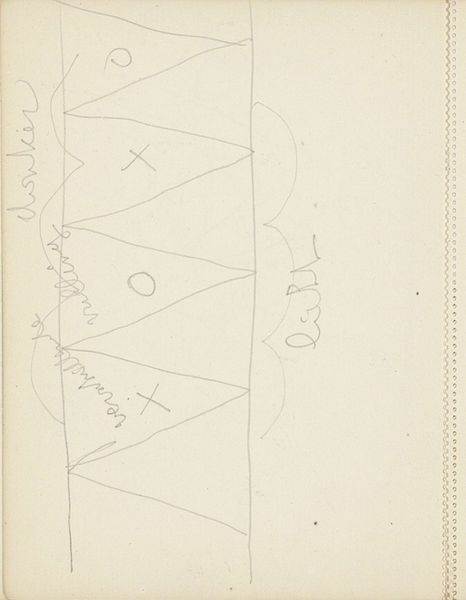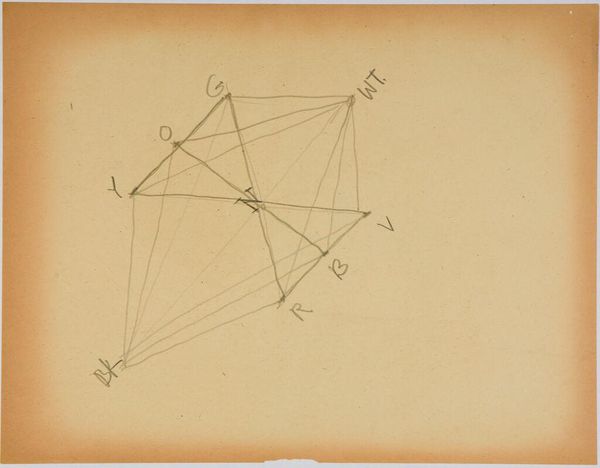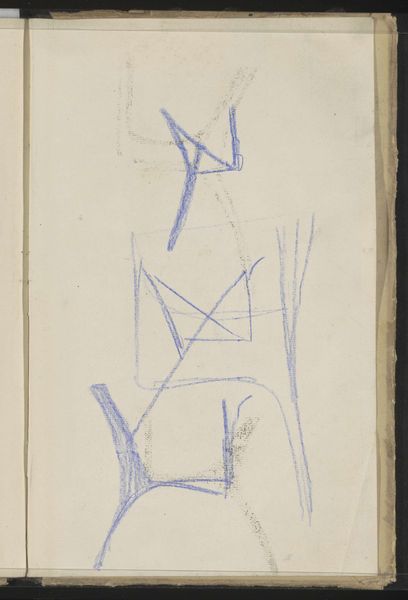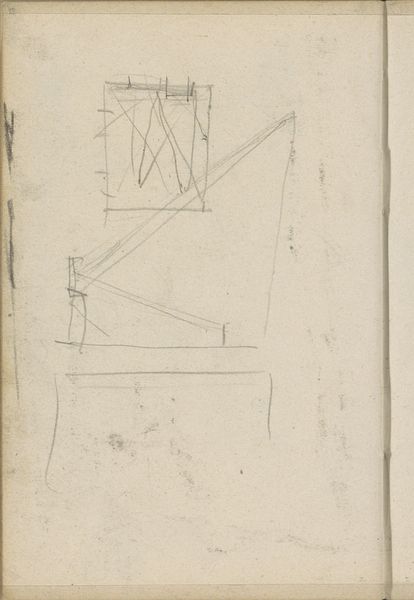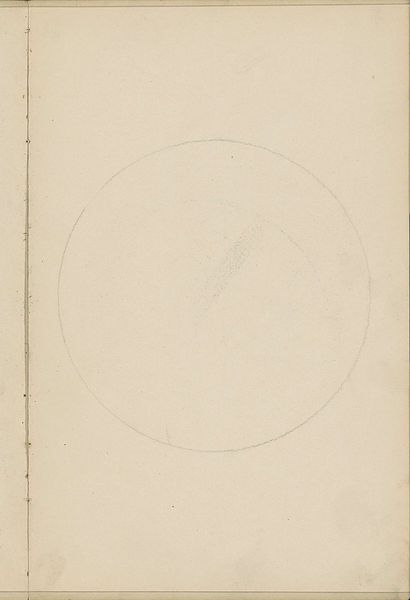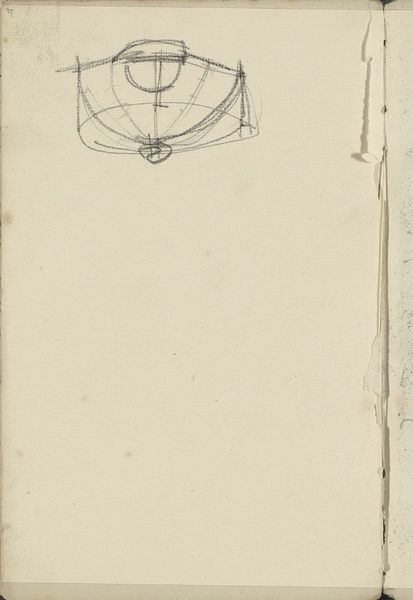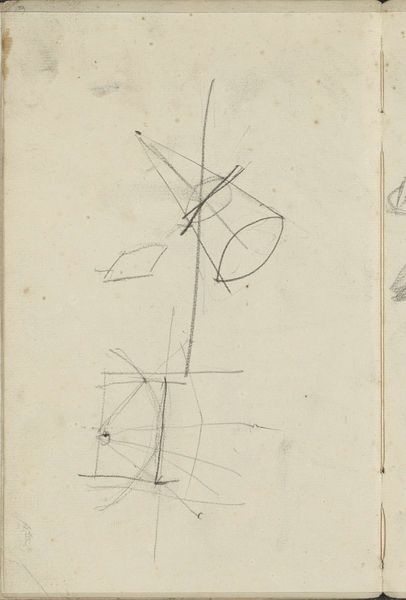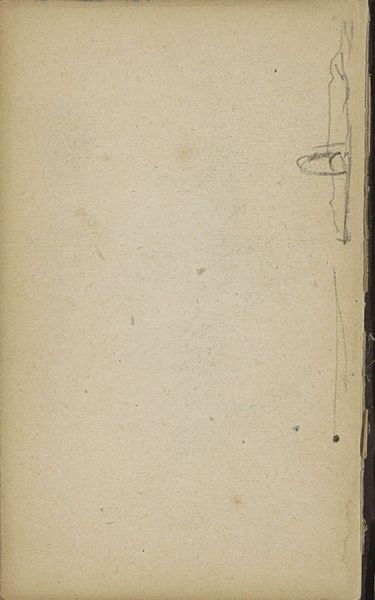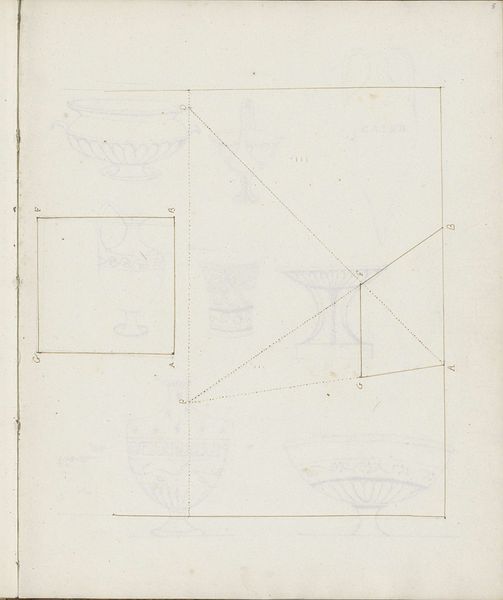
drawing, pencil, graphite
#
drawing
#
light pencil work
#
form
#
geometric
#
pencil
#
abstraction
#
line
#
graphite
Copyright: Rijks Museum: Open Domain
Editor: Here we have "Geometrische vorm," or "Geometric Form," a pencil drawing by George Hendrik Breitner, dated between 1867 and 1923. It’s… intriguing! It reminds me of a half-finished star. What do you see in this piece, in terms of its historical context? Curator: This unassuming sketch provides a fascinating glimpse into the artistic climate of Breitner's time. He’s best known for his depictions of gritty urban life in Amsterdam, right? Editor: Yes, that’s right. Curator: So, seeing him experiment with geometric abstraction here really makes me consider the influence of the burgeoning avant-garde movements. Think about the socio-political context of early 20th-century Europe, the rapid industrialization, and the questioning of established norms. How might those shifts be reflected in artistic experimentation like this? Editor: That's interesting! So, it's less about the form itself and more about the changing artistic landscape that allowed this kind of sketch to even exist? Curator: Precisely. The politics of imagery are shifting; artists were beginning to break from traditional representational forms. Breitner's engagement, even tentatively, places him in conversation with these broader artistic and social shifts. This "simple" geometric form then embodies cultural anxieties about rapid social and technological change. Editor: Wow, I didn't expect such a simple drawing to reveal so much about the socio-political moment! It really challenges the way we define art. Curator: It is a great reminder that everything happens somewhere, even a simple pencil line. Thank you!
Comments
No comments
Be the first to comment and join the conversation on the ultimate creative platform.
